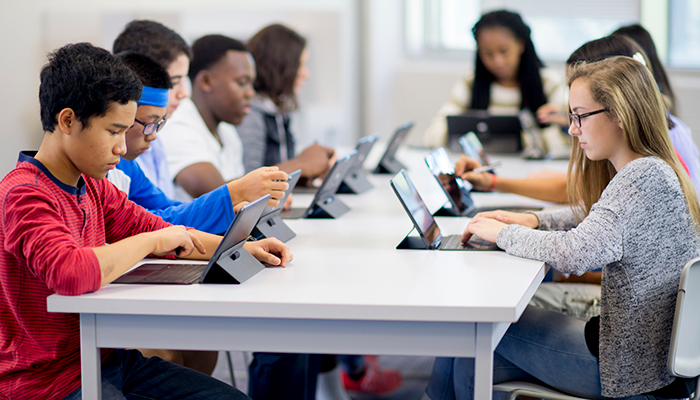The ultra-connected younger generations look to technology to navigate day-to-day life from how they get from point A to point B, stay connected to friends and interact with the world. But technology may not be helping young people when it comes to day-to-day stress.
A new survey by GENYOUth and Thrive Global asked young people ages 11 to 19 questions about their stress levels, physical activity and technology usage. The results tell a surprising story – today’s kids are stressed out and want more opportunities to be healthy, but they don’t feel like technology is helping them. Here’s what the survey found:
Stress is a concern
Approximately 60 percent of respondents reported feeling stressed frequently. As an organization that’s passionate about improving the health and well-being of students, this is an area of great concern. Stress can leave students feeling irritable and less focused, which impacts academic success. Chronic stress has more dangerous implications, including increased risk for disease or cardiovascular issues.
It’s crucial that we give young people the tools to properly manage stress – the sooner the better. Physical activity is a key tool to boost metabolic activity and help alleviate stress, especially low-level physical activity (LLPA). With innovative classroom furniture like height-adjustable standing desks, students can benefit from LLPA integrated into classroom time through an active learning environment.
A technology disconnect
More than half of respondents reported that they are interested in technology like apps, fitness trackers and websites to support their overall health and wellness. But the survey found that only one in 10 young people use technology effectively in this area. With the survey reporting that 45 percent of students believe that technology can help relieve stress, we need to take advantage of this opportunity and repair this disconnect.
The root of the problem may be the fact that 42% of respondents said that new health-related apps or devices are not designed for “people my age.” Organizations need to reassess how they develop and maintain health and wellness tools to ensure they meet the needs of all age groups – especially young people who should start leading a healthy lifestyle early on. Better yet, providing young people with the right ergonomic guidelines and equipment to use technology comfortably ensures they can further enhance their well-being for the long-term.
Good habits for life
The classroom is a place for learning, and the lessons extend beyond the curriculum. Students are learning manners, how to interact with others, and the social norms of society. One of the main social norms they learn – unconsciously – is sitting. They, in turn, develop the same bias toward sitting that most of us have as adults. With everything we know about the links between learning, physical activity and health, it’s our responsibility to transform classrooms to minimize sedentary behavior.
Kids want to be active beyond limited physical education class time and recess. The survey found that 68 percent of students want to stand and move during class. Introducing LLPA into sedentary classrooms with sit-stand desks is a health-enhancing way to boost students’ metabolism and engagement. Through small, non-disruptive changes, we can use LLPA to help students keep heart rates a bit higher and maintain insulin effectiveness, which leads to more alert and engaged students. This also helps them manage stress levels and develop a movement-mindset to prepare them for a healthier future.
To read more about the results, click here.



